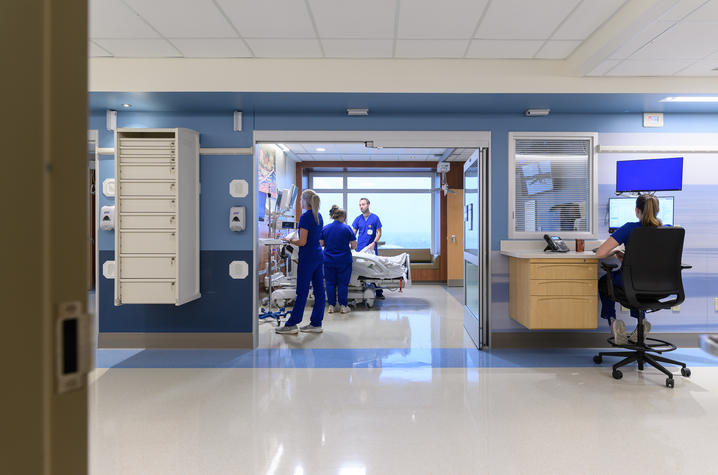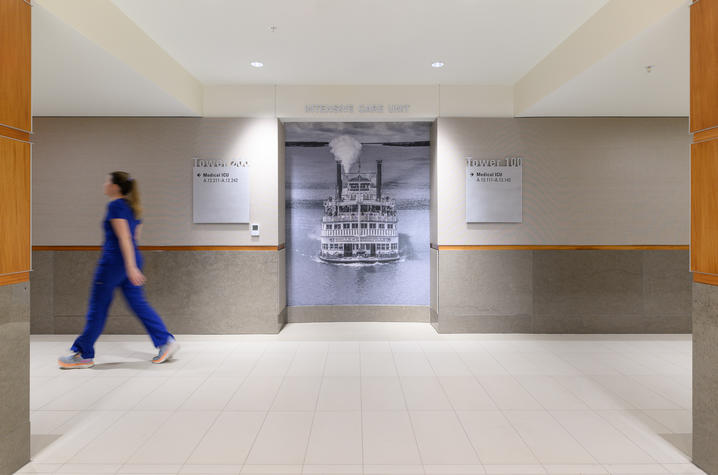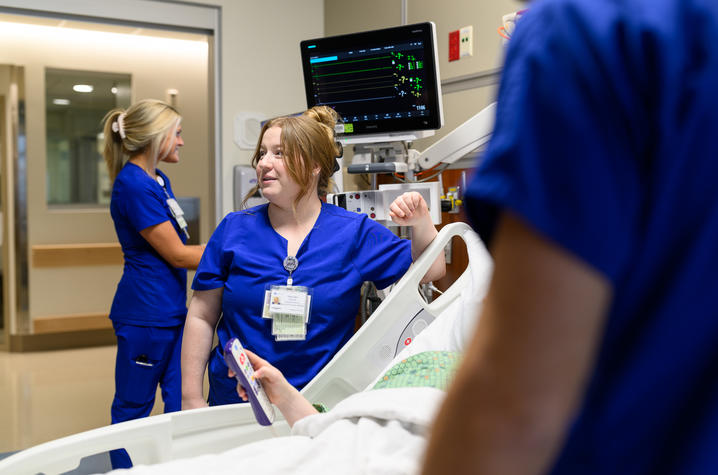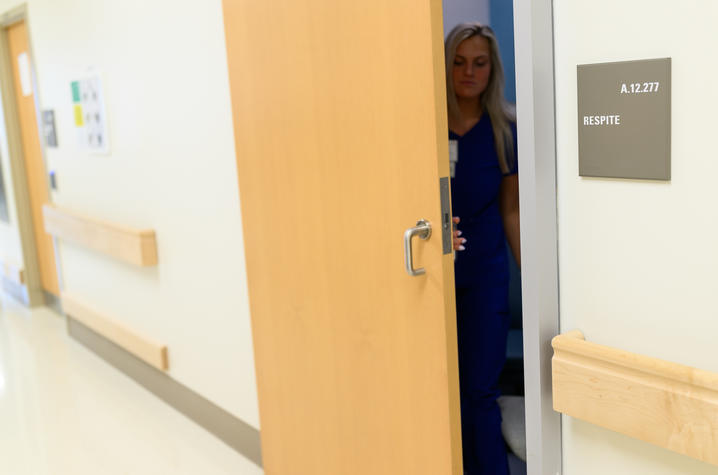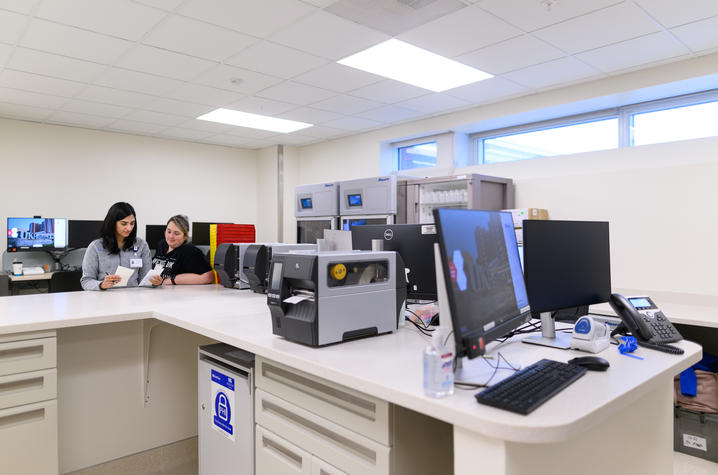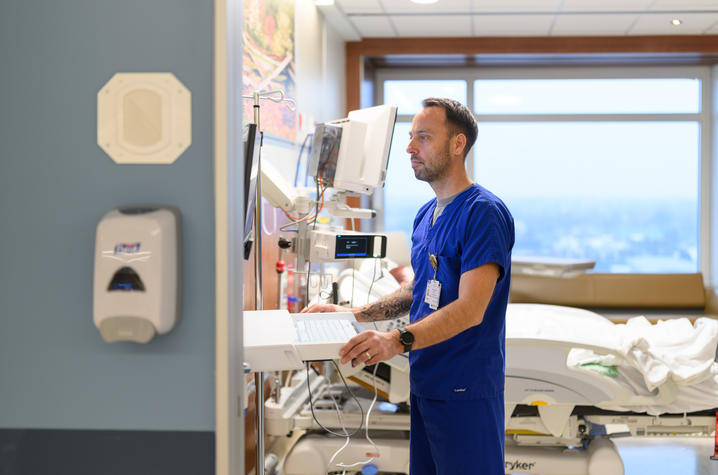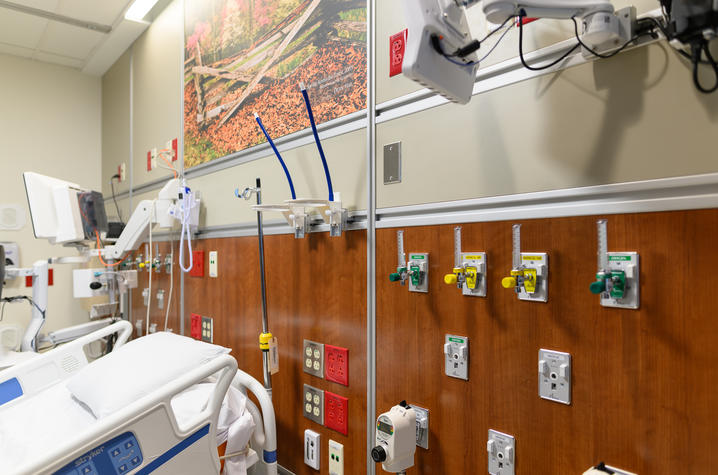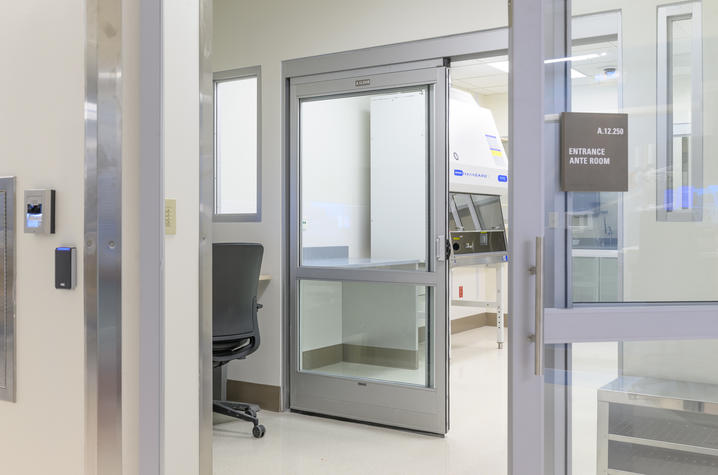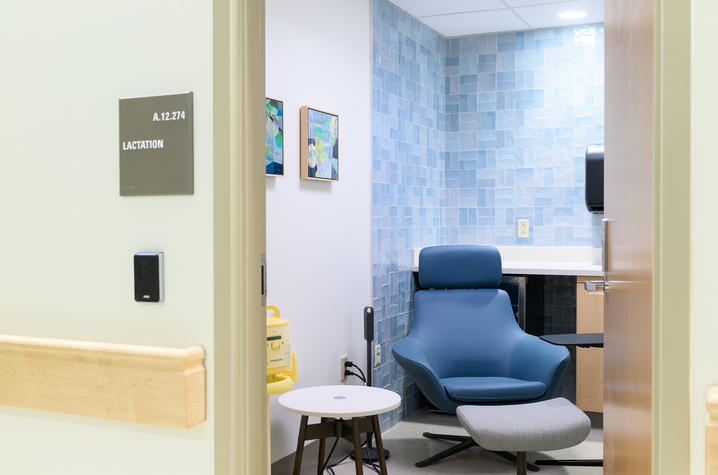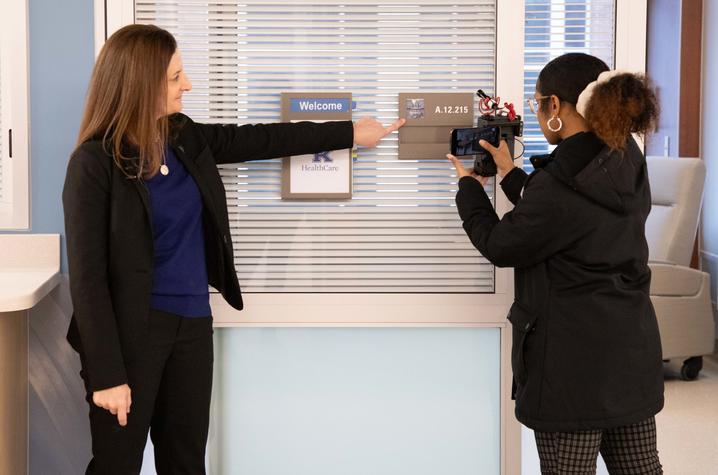UK HealthCare opens new ICUs on 12th floor of Chandler Hospital Pavilion A
LEXINGTON, Ky. (Jan. 29, 2024) — Beginning next week, the medical and cardiovascular intensive care units (ICUs) inside the University of Kentucky Albert B. Chandler Hospital have a new home: the 12th floor of Pavilion A, the final floor of the tower to be completed.
Previously, UK Chandler Hospital’s medical and cardiovascular ICU patients have been spread across multiple floors of the tower. The new space moves the units into one floor with a number of modifications and upgrades from the previous locations, driven by patient and staff experience in UK HealthCare’s various ICUs during the COVID-19 pandemic.
“As the state’s academic health system in a comprehensive campus, we leverage the strengths of multiple experts and advanced options, as Kentuckians look to us to provide the highest level of complex care for seriously ill patients,” said Robert S. DiPaola, co-executive vice president for health affairs at UK. “These new ICUs incorporate the best of all worlds: state-of-the-art technology that allows us to handle the most complex health issues, a functional and aesthetic approach to floor and room design, and of course, the compassionate care that our staff has always provided to critically ill and injured patients.”
“UK HealthCare is the state’s center for advanced subspecialty care because we have the outstanding healers – the physicians, professionals and medical staff – who provide the care than only we can,” said Eric N. Monday, co-executive vice president for health affairs. “Such expertise needs the best possible facilities to ensure we extend and maximize that level of care. With each floor of Chandler Pavilion A, we have learned more and added more – in terms of technology, upgrades and staff support. This final floor represents, in many ways, the culmination of what we have learned in developing the facilities that Kentuckians need and deserve in the provision of care.”
The 12th floor will house 64 total ICU rooms, eight more than the current number of ICU beds at Chandler. New features include:
- All rooms have negative pressure capability
- All rooms have built-in tubing access ports that enable IVs and monitors to remain outside the room, allowing health care providers to monitor infectious disease patients more frequently and easily
- During a state of emergency, all rooms can be doubled to handle an influx of patients
- Eight patient rooms have built-in antechambers to allow both a positive- and negative-pressure environment for immunocompromised patients with more serious infectious diseases
- The floor houses a Serious Communicable Disease Lab, which allows for quicker blood and tissue testing
- Separate donning/doffing stations for personal protective equipment (PPE)
- Dedicated ICU pharmacy
- Clinical nutrition room
- Multiple workrooms, a conference/classroom and other staff offices
“The only constant in medicine is the imperative to learn, improve and prepare for the needs of current and future patients,” said Nicholas Van Sickels, M.D., director of infection prevention and control at UK HealthCare. “Taking what we learned during the COVID-19 pandemic and directly implementing it into the foundation of the new ICU floor allows staff to be better prepared to care for patients who need true intensive care for infectious diseases.”
The floor was also thoughtfully designed with the physical and mental health of its staff in mind. UK HealthCare’s Nursing Wellbeing Committee, ICU staff nurses, and ICU physicians all provided feedback on both the aesthetics and functionality of the floor design.
“We did keep well-being at the forefront of our minds when designing this floor,” said Ben Hughes, the nursing operations director of the medical ICU, and one of the co-chairs of the Nursing Wellbeing Committee. “It truly was based on what we learned and wanted during the pandemic, and we tried to incorporate that into the design.”
These newer staff-focused features of the floor include:
- Two larger communal breakrooms; these interior rooms include frosted windows with smart ambient lighting to mimic natural sunlight.
- Four “nurse recharge” rooms that provide a space for nursing staff to convene and rest in smaller groups.
- Two individual “recharge” rooms on the floor that allow staff to take a true solo break to read, listen to music, meditate and more.
- Two additional shared consult/recharge rooms, available either for consultations between health care providers and patient families, or for any individual to use to have a moment alone.
- Two private, dedicated lactation rooms on the floor that include sinks and refrigerators for nursing mothers.
All of these spaces include ergonomic seating and calming color schemes. Additionally, many of the interior walls of the staff workspaces are clear glass. This allows more natural sunlight into the space and contributes to a more “open” environment, while also allowing staff to more easily keep an eye on patients up and down the halls.
“When we first began seeing COVID patients in early 2020, no one knew how to handle those specific needs,” said Ashley Montgomery-Yates, M.D., UK Department of Internal Medicine senior vice chair of strategy and director of UK’s ICU Recovery Clinic. “We adapted and created makeshift solutions as we went along to help staff better care for those patients. Now, those solutions are built into the floor design. That, along with the intentional thought give to our staff’s health to help prevent burnout, better prepares us for future patients who need the complex care of our ICUs.”
“The aesthetics and design of a hospital aren’t just embellishments – they’re part of the prescription,” said Anna Kalema, M.D., UK HealthCare senior inpatient medical director for critical care. “From the beginning, Pavilion A was intentionally designed to incorporate art and natural sunlight throughout patient care spaces to elevate the healing experience. With these improvements and new design elements, the 12th floor now serves as a model for future inpatient spaces at UK HealthCare.”
Once the existing ICUs on floors nine and 10 are moved to the new floor, those spaces will be backfilled from other areas of UK HealthCare and will include beds for orthopaedics trauma, OB/GYN postpartum and hospital medicine.
Opening first with the new Emergency Department in 2010, the Pavilion A facility has finished out individual floors since then through a planned phased opening, with construction of the final floors delayed slightly due to the pandemic. Last spring, the UK Board of Trustees approved a plan to begin design for a new patient care tower to handle the growing demand for high-acuity inpatient health care in the Commonwealth.
“As the medical needs of Kentuckians grow, so do we,” said Christopher DeSimone, M.D., acting executive chief medical officer for UK HealthCare. “We’re here to meet the ever-evolving health care needs of the state. We’re continuing to build a health care system that not only provides what Kentuckians need now, but what they’ll need in the future. Finishing out Pavilion A with one of the country’s best ICUs is just one step toward achieving that goal.”
UK HealthCare is the hospitals and clinics of the University of Kentucky. But it is so much more. It is more than 10,000 dedicated health care professionals committed to providing advanced subspecialty care for the most critically injured and ill patients from the Commonwealth and beyond. It also is the home of the state’s only National Cancer Institute (NCI)-designated Comprehensive Cancer Center, a Level IV Neonatal Intensive Care Unit that cares for the tiniest and sickest newborns and the region’s only Level 1 trauma center.
As an academic research institution, we are continuously pursuing the next generation of cures, treatments, protocols and policies. Our discoveries have the potential to change what’s medically possible within our lifetimes. Our educators and thought leaders are transforming the health care landscape as our six health professions colleges teach the next generation of doctors, nurses, pharmacists and other health care professionals, spreading the highest standards of care. UK HealthCare is the power of advanced medicine committed to creating a healthier Kentucky, now and for generations to come.





